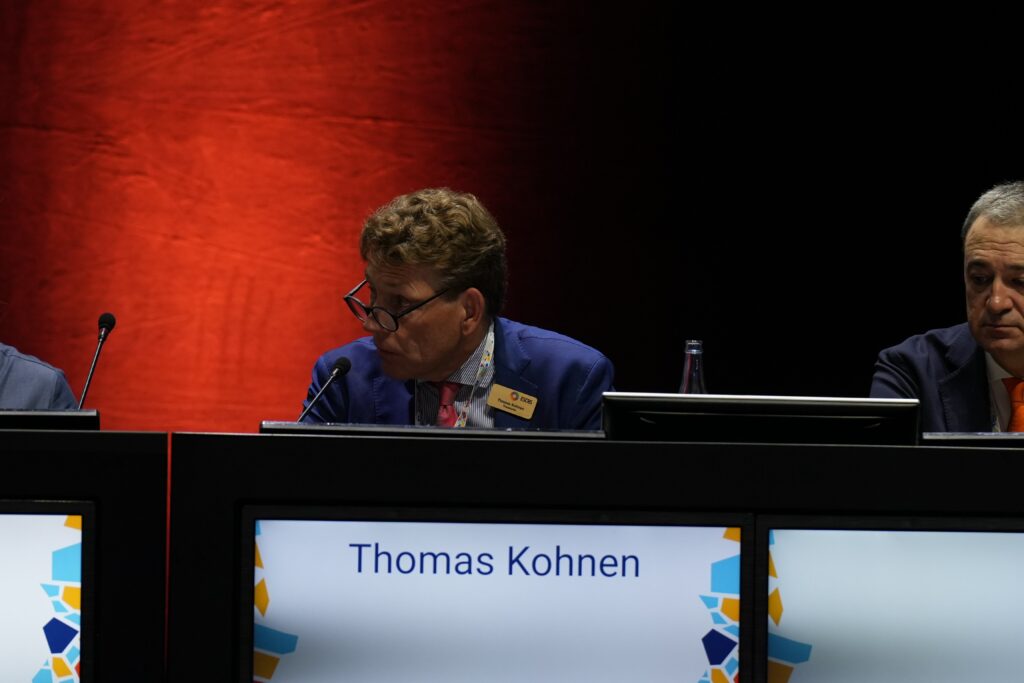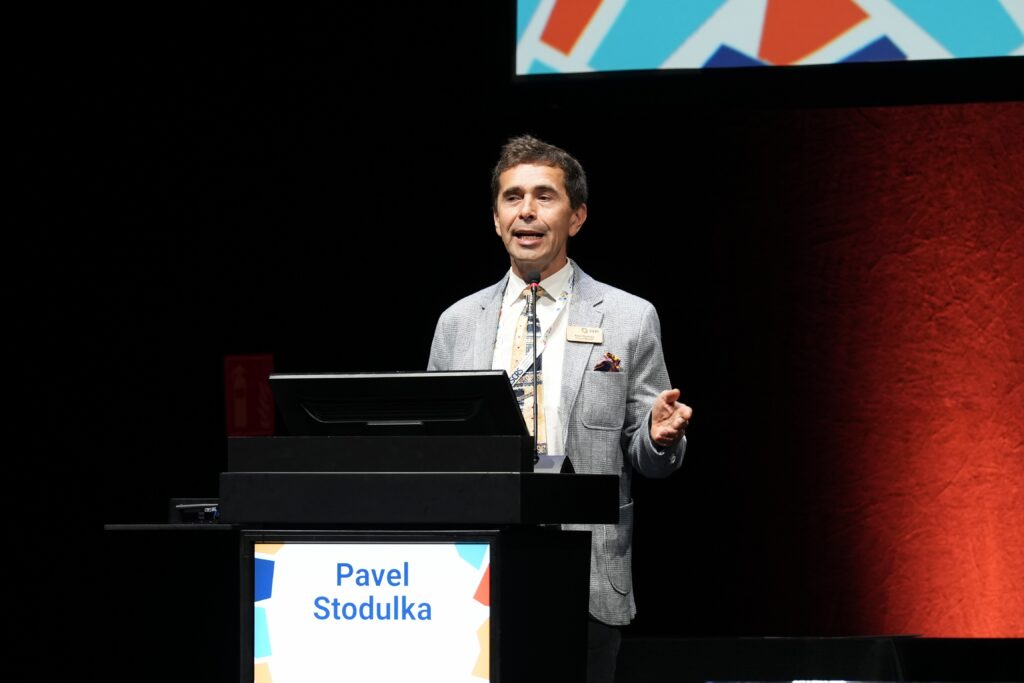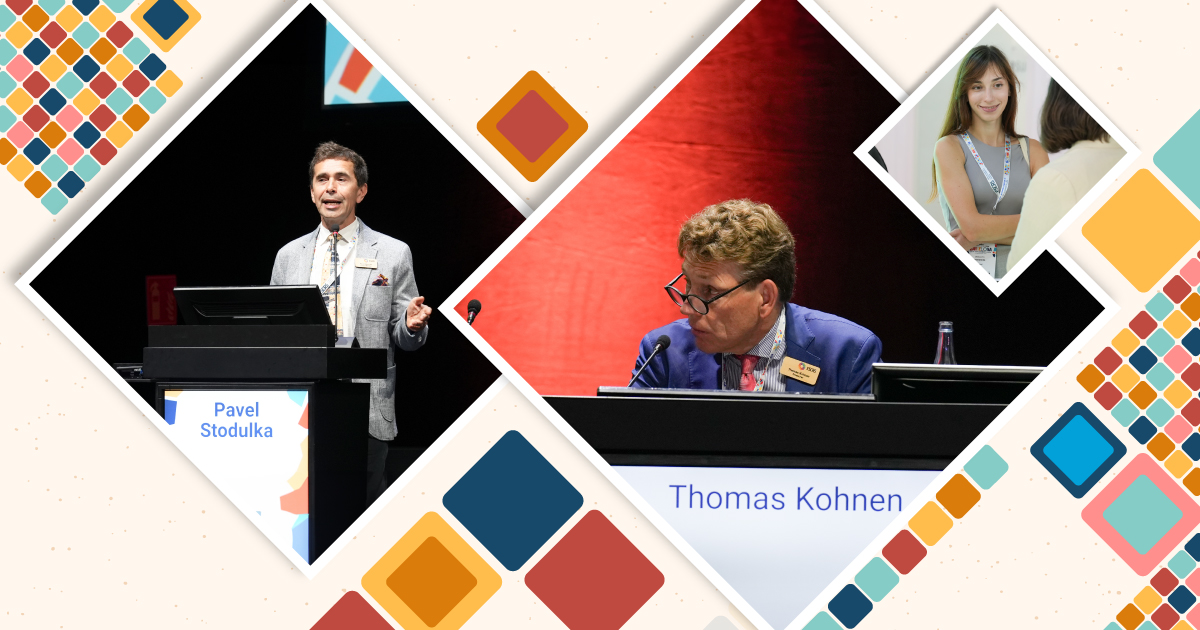Recent strides in intraocular lens (IOL) technology are redefining visual possibilities. On Day 2 of the 42nd Congress of the European Society of Cataract and Refractive Surgeons (ESCRS 2024), visionaries in the field explored cutting-edge advancements like monofocal plus lenses, accommodating lenses, mix-and-match strategies and laser IOL modifications.
According to Dr. Vance Thompson (USA), monofocal plus lenses, also referred to as enhanced monofocals, are designed to improve intermediate vision compared to conventional monofocal IOLs, while maintaining similar distance vision performance. He noted that for patients seeking crisp image quality, particularly in low light conditions, monofocal plus implants can be an ideal option.
He emphasized that, generally, correcting spherical aberration improves contrast sensitivity but decreases depth of focus. “If you correct for spherical aberration, it will enhance contrast sensitivity and reduce depth of focus. It’s also related to pupil size. So, if you have younger patients, this could be a concern, especially for post-LASIK patients. You also need to ensure precise centration,” he explained.
“And if the patient isn’t completely satisfied, don’t always blame the lens. Optimize that eye,” Dr. Thompson added. He emphasized that extended depth of focus lenses always come with some trade-off in image sharpness. “So, you need to bring your A-game, optimize the tear film and epithelium, ensure the capsule is clear, and consider these factors preoperatively. Intraoperatively, aim for 360 degrees of capsule overlap, polish the capsule, and ensure proper centration of the implant. Postoperatively, if necessary, further optimization may be needed,” he explained.

New frontiers in accommodating IOLs
Dr. Thomas Kohnen (Germany) discussed three types of accommodating IOLs: optic shift IOLs, dual-optic IOLs and fluid-filled IOLs. Optic shift lenses are optics that move forward or backward depending on the contraction of the ciliary muscle. Examples, said Dr. Kohnen include Crystalens (Bausch & Lomb) and Tetraflex (Lenstec, Inc.).

However, early-generation accommodating IOLs have not demonstrated full accommodative ability. While they may improve reading ability and visual acuity in intermediate spaces without true accommodation, not all patients with an accommodating IOL experience actual accommodation. There is also a lack of rigorous study designs. “Prospective, randomized, masked studies need to be done, and control groups, parameters for near VA and change of refractive power need to be addressed,” he said.
The second category is the dual-optic design, which features two optics that change position relative to each other. The degree of accommodation depends on the axial length, lens position and corneal curvature. Examples include Lumina (AkkoLens) and Synchrony (Visiogen, Inc.). Literature indicates that dual-optic IOLs offer significantly better ocular optical quality than single-optic accommodating IOLs. However, near VA is still insufficient, and there are potential complications during surgery.
The third category—fluid-filled IOLs—is seen as a promising future development. “These lenses adjust power depending on ciliary contraction and achieve real accommodation,” he noted, citing examples such as Juvene (LensGen, Inc.), which emulates the natural crystalline lens, and FluidVision (Alcon, formerly PowerVision), the first true shape-change, fluid-driven IOL. “As the capsular bag squeezes a small amount of fluid from the haptics to the lens optic, the optic inflates, providing near vision. Conversely, for far vision, the fluid is moved in the opposite direction, deflating the lens optic,” Dr. Kohnen said, explaining the mechanism.
He concluded the talk by stating that accommodative lenses have the potential to shape the future of vision correction and that he is eagerly anticipating their development.
Enhancing vision with mix-and-match IOL strategies
Mix-and-match of IOLs involves using a combination of different IOL in each eye to achieve binocular summation. The goal is to enhance the range of vision and achieve spectacle independence, while minimizing photic phenomena, noted Dr. Christina Leydolt (Austria).
Dr. Leydolt explained that ideally, we aim to achieve excellent distance, intermediate and near vision, along with good contrast sensitivity and a wide range of vision, all while minimizing halos or glare. Therefore, a mix-and-match approach using a combination of monofocal, EDoF or multifocal lenses can potentially offer the benefits of these lenses while reducing their disadvantages.
“Some mix-and-match combinations, mainly monofocal and refractive IOLs, can reduce photic phenomena. Mix and match can also improve spectacle independence. It is a good option for patients with previous unilateral cataract surgery. However, keep in mind that stereopsis may be reduced. Patient selection is crucial and you need to be sure that they have binocularity. Patient education is also crucial — you need to tell them about the different optics in each eye and the need for neuroadaptation,” she emphasized.
Current trends in IOL technology
Last but not least, Dr. Pavel Stodulka (Czech Republic) explored the latest advancements in IOL technology, highlighting several key developments:
Material Innovations: Although silicone is nearing obsolescence, it has made a comeback with the light-adjustable lens (LAL). Hydrophilic acrylic is in decline, while hydrophobic acrylic is increasing in popularity and remains the preferred choice in many regions. Additionally, cross-linked polyisobutylene (xPIB) is emerging as a new material.
Design Evolution: The field now offers a diverse range of optic designs, including the latest refractive extended range of focus IOLs (ERoF, EDoF). “Companies are refining diffractive designs, achieving comparable or improved outcomes with trifocal IOLs with only seven diffractive rings and reduced dysphotopsia. This is very promising,” he stated.
Haptic Design Trends: Single-piece IOLs are becoming the standard, with a growing trend towards four haptics. Currently, accommodating designs are not available.
Innovative Modifications: A notable advancement is the ability to modify IOLs inside the eye using lasers. “A thin layer of the IOL optic is modified inside the eye using a green femtosecond laser. Diffractive structures convert a monofocal IOL into a multifocal one. The laser alters polymer molecules in precise thin layers with different refractive indices. The change occurs not on the surface but entirely inside the material. This technology is applicable to all acrylic IOLs. There is no lens cutting or ablation, and it has a high precision of ±0.1D of target power,” he explained.

“Laser RIS can modify in vivo IOL to improve near vision. The first short-term results are promising. However, more patients with longer follow-up are needed. The possible advantages are: this treatment is independent of IOL decantation and tilt, and you can customize the treatment diameter according to the pupil. This technology can also be used for IOL manufacturing, whereby a universal monofocal IOL can be converted into EDoF, multifocal, toric or customized IOL. In 75 years, we have really come a long way from Ridley and his first IOL,” he quipped.
Editor’s Note: Reporting for this story took place at the 42nd Congress of the European Society of Cataract and Refractive Surgery (ESCRS 2024), held from 6-10 September in Barcelona, Spain.



